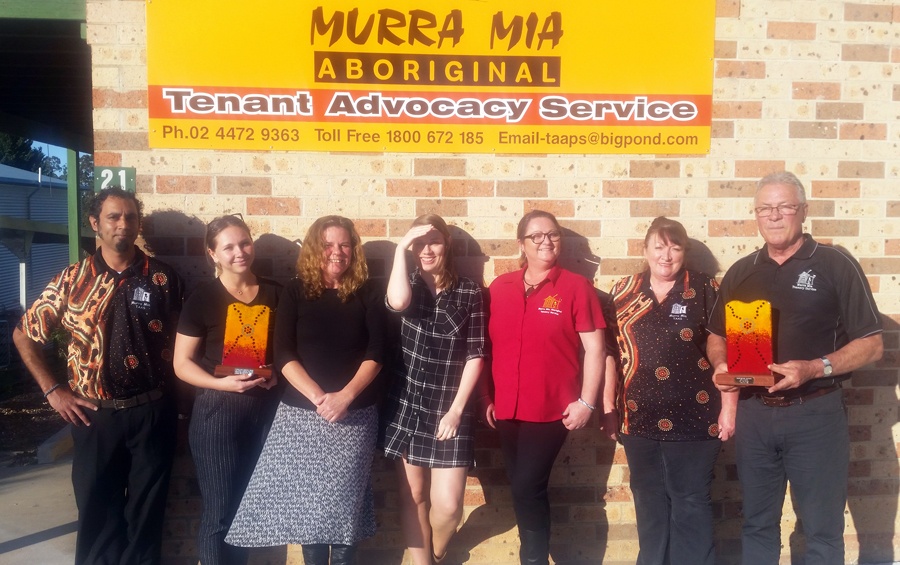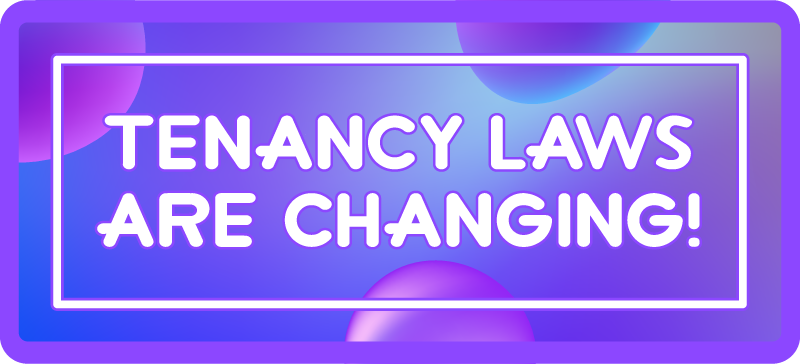Insights from Jim Allen, Coordinator of Murra Mia Aboriginal Tenants' Service
01/07/2014

“If we had walked together side by side as a country, walked together as equals, we would have developed in step with each other.”
Why did you first decide to be a tenants’ advocate?
It wasn’t a decision to become a tenants’ advocate, I have always been involved in Aboriginal affairs, whether it be Land Rights movements or trying to work through the issues to get more and better housing for Aboriginal people. A position became available in tenancy advocacy and it was a bridge between my work at a community level and paid employment.
Can you tell us your thoughts on Aboriginal Housing?
Housing has always been one of the basic human rights that Aboriginal people have been denied for as long as occupation of Australia has taken place. Aboriginal people have been made to be fringe dwellers, their own land has been taken from them. Aboriginal people have been put onto missions, segregated from the white community and denied the basic human right of housing. Aboriginal people are still being denied the basic right of proper housing today.
It goes back to the original white settlement of Australia, the colonialisation of this country. White settlers expelled Aboriginal people from this land. In doing that, they segregated Aboriginal people away from the white development that took place in the 200 years that followed. If you segregate people away from a developing economy, leave them out of a financial system, leave them out of the education system, steal their wages, steal their children, push them onto missions, put them into homes, incarcerate them and don’t allow them to be a part of the overall development, at some point in time there is going to be poverty amongst that segregated group of people.
When you leave Aboriginal people out of the financial and legal system, it is easy to stigmatise Aboriginal people for not being able to read or write, not being able to own or care for a house, not being able to abide by white man’s law. Aboriginal people have been stigmatised for their disadvantage over 200 years. If we had walked together side by side as a country, walked together as equals, we would have developed in step with each other. Instead, today we have high rates of suicide, alcoholism, high infant mortality, suicide, poverty and disadvantage amongst Aboriginal people. If we had walked together side by side as a country, we would have all had the same standards of living today.
Could you describe some of the policies that have impacted on the state of repair of Aboriginal Housing in NSW?
It is a fact that the vast majority of Aboriginal people now are reliant on social housing and that can be government managed social housing or Aboriginal managed social housing. The two systems have not walked side-by-side in their development. Where government managed social housing is financially supported by the government, Aboriginal managed social housing has been left without financial support for 40 or 50 years.
The locations where most of our Aboriginal communities have been able to acquire housing are usually on the former reserves and missions. The former reserves and missions do not receive local shire council support or funding for roads, the delivery of power, garbage collection, water or sewerage and therefore the liability falls with the local community, a local community that has minimal government support.
Once again, Aboriginal housing is now in a state of wholesale disrepair. Governments are still saying that they will not financially support further development or capital growth for Aboriginal housing even when all of the statistical data states that we need thousands of more houses across the country to meet the homelessness, the overcrowding and the aging stock of some of the housing that is 40, 50 and 60 years old.
What do you see as the three key tenancy issues for Aboriginal tenants in NSW?
The three key issues would be:
- Repairs and maintenance issues;
- Overcrowding; and
- Policy around housing that addresses the uniqueness of Aboriginal culture.
Aboriginal people often get into difficulty because of their close kinship ties and the visitors that may come and go during the course of the tenancy. This could be seen as breaching public housing policy regarding noise and overcrowding. This could also lead to a tenant’s rent subsidy being cancelled because there are constantly other people staying at the social housing property. All Aboriginal people still have strong associations through family, clans and their tribes that have evolved over thousands of years. Those associations still exist today. Our people will travel from one end of the coast to the other and stay with their relatives and they are passing through many many towns. This happens constantly. This places a burden on those people they visit who are living in social housing. Social housing managers don’t understand it, neighbours don’t understand it and it becomes a crisis point in most tenancies at one point or another. Housing policy doesn’t allow for extended family and the relationships that we have with the extended family, our clans and our tribal history.
What have been some of your most rewarding moments as an Aboriginal tenants’ advocate?
My most rewarding moments have been when I have been able to save an Aboriginal family from an unjust outcome. When I say unjust, I mean when all of the facts become available and it might be through a Tribunal, that we save a tenancy that was definitely going to be ended because the social housing provider had not really fulfilled what they should have done in trying to sustain a tenancy and have unjustly taken action that they shouldn’t have taken. When I walk away from the house, when I know them people are going to have a place to stay and all them little children are not going to be homelessness tonight - that makes me really happy.
What has been your most disappointing moment as an Aboriginal tenants’ advocate?
The most disappointing moment is when good people in social or public housing management don’t do the right thing and allow unjust treatment of our people.
What are some of the key challenges that Murra Mia encounters in advising Aboriginal tenants?
A major challenge is our lack of resources. We only have 5 workers and we cover a geographical area that you could fit France, Belgium, Switzerland, England, Ireland and Wales into.
What is the value of community partnerships and relationships to the outcomes that Murra Mia achieves?
Without community partnerships or working agreements with all involved in housing, Murra Mia would be unable to provide not only advocacy at a basic level but advocacy at a policy and tenancy management level. Murra Mia highly regard the strong networks, the working partnerships that we have developed over 20 years with social housing providers, Housing NSW, community housing providers, the Aboriginal housing sector and land councils right across our geographical area. Those partnerships and working networks allow us to advocate for Aboriginal tenants in every part of our working region.
What key messages would you like to give to Aboriginal tenants before they first enter into a tenancy agreement?
- Keep any documents relating to your tenancy and have them stored in a secure place. You need to keep your lease, ingoing report and any letters from your landlord. Most of all, you need to keep all documentation and rent receipts.
- You need to reply to the letters from your landlord.
- Try and maintain a positive, secure home.
- Any Aboriginal person who gets into a conflict in their tenancy needs to contact their local Aboriginal Tenancy Service. We have got extensive networks and we are highly professional advocates. We are experienced representatives at the Tribunal and through conciliation and mediation with Housing, real estate agents and all landlords.
- The TAAS network has the highest reputation and does an incredible job around sustaining tenancies for Aboriginal people in the rental system.



